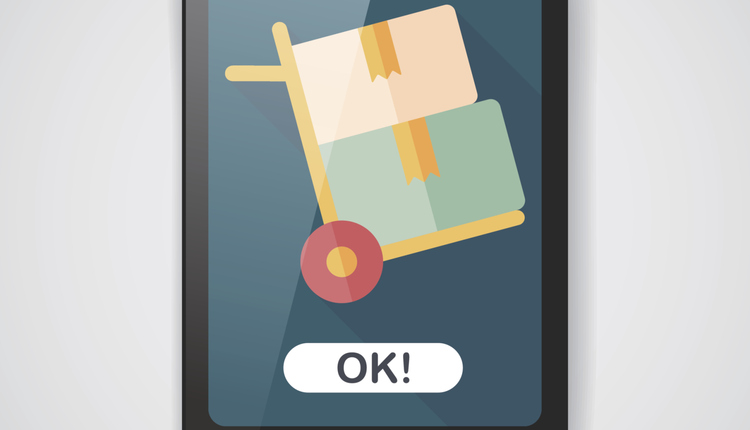Are you looking for a way to improve productivity in your inserting operation?
OK, that's a dumb question - who wouldn't want improved productivity? It allows you to meet SLA's better, gives you more time for quality control, frees up capacity for accepting more work, and might even lower your labor costs.
There are lots of ways to accomplish higher productivity. Often we think first about faster inserting machines, automated set-up, automated balancing or camera-based quality-control. These are all viable solutions but they also require significant capital investment.
I encourage you to also examine the envelopes you run. This is an area that is often overlooked as a productivity enhancing tactic. But fixing problems with materials often results in improvements that exceed the performance bumps that you can expect from the investments in new hardware -with little or no expense.
There are a number of things that can happen to envelopes that will cause the inserter to stop or jam. If this occurs too often during a shift, the productivity of your department can decline. Here are some things to consider:
Inline material and inserts jam as they are fed into the envelope - This can be caused a number of different factors:
Insufficient clearance - Check your inserter manufacturer's specifications for the minimum clearance. For most inserters, less than 1/8" clearance is going to cause problems. The more clearance (without experiencing material shift that causes address info to not be visible through the window), the better.
Material catching on envelope seams or glassine - If the seam glue is inaccurately applied then the front and back of the envelope can become glued together or the seams can buckle, stopping the material before it is fully inside the envelope. Glassine must be sealed all the way around so that the plastic doesn't lift up and prevent the material from entering the envelope smoothly.
Not enough thickness capacity - Again, check the specifications to make sure you are not exceeding the inserter's maximum package thickness rating. But also make sure the envelope can expand far enough to accommodate all the material that the equipment is attempting to shove into the envelope. Problems sometimes pop up with envelopes that are just fine most of the time, but a special run may have one extra page that is just enough to make the thickness exceed the capacity of the envelope.
Flap won't open - Flaps that are too long or too short will keep the mechanism from being able to properly pull it open with suction cups or other methods. Flaps with diagonal sides that are too steep or too gentle will cause parts such as guides that are supposed to slide under the flap to miss the mark.
Flap won't close properly. In addition to the conditions discussed above, a non-closing flap can be the result of:
Material too tall for the envelope - You may need to adjust the folds, or reduce the size of the inserts. If this isn't possible, a taller envelope may be necessary. Make sure you are still within the aspect ratio of height to width specified by the USPS for machineable mail.
Inadequate glue - If the glue on the flap isn't applied consistently the flaps will pop open causing envelopes to jam at the meter, the exit conveyor, or in the mail trays.
Before you attempt to get corporate approval for new hardware, spend some time assessing the material running through your current equipment. A few minor adjustments in the quality or design of the envelopes could make a big difference.
Mike Porter is an expert in Print and Mail operations and President of Print/Mail Consultants. For more helpful tips, visit www.printmailconsultants.com and sign up for their free newsletter for document operations, Practical Stuff. Or look for his book "Take this Job and Stuff It! - A Practical Guide for Document Operations Managers" in the Mailing Systems Technology online store. @PMCmike on Twitter
OK, that's a dumb question - who wouldn't want improved productivity? It allows you to meet SLA's better, gives you more time for quality control, frees up capacity for accepting more work, and might even lower your labor costs.
There are lots of ways to accomplish higher productivity. Often we think first about faster inserting machines, automated set-up, automated balancing or camera-based quality-control. These are all viable solutions but they also require significant capital investment.
I encourage you to also examine the envelopes you run. This is an area that is often overlooked as a productivity enhancing tactic. But fixing problems with materials often results in improvements that exceed the performance bumps that you can expect from the investments in new hardware -with little or no expense.
There are a number of things that can happen to envelopes that will cause the inserter to stop or jam. If this occurs too often during a shift, the productivity of your department can decline. Here are some things to consider:
Inline material and inserts jam as they are fed into the envelope - This can be caused a number of different factors:
Insufficient clearance - Check your inserter manufacturer's specifications for the minimum clearance. For most inserters, less than 1/8" clearance is going to cause problems. The more clearance (without experiencing material shift that causes address info to not be visible through the window), the better.
Material catching on envelope seams or glassine - If the seam glue is inaccurately applied then the front and back of the envelope can become glued together or the seams can buckle, stopping the material before it is fully inside the envelope. Glassine must be sealed all the way around so that the plastic doesn't lift up and prevent the material from entering the envelope smoothly.
Not enough thickness capacity - Again, check the specifications to make sure you are not exceeding the inserter's maximum package thickness rating. But also make sure the envelope can expand far enough to accommodate all the material that the equipment is attempting to shove into the envelope. Problems sometimes pop up with envelopes that are just fine most of the time, but a special run may have one extra page that is just enough to make the thickness exceed the capacity of the envelope.
Flap won't open - Flaps that are too long or too short will keep the mechanism from being able to properly pull it open with suction cups or other methods. Flaps with diagonal sides that are too steep or too gentle will cause parts such as guides that are supposed to slide under the flap to miss the mark.
Flap won't close properly. In addition to the conditions discussed above, a non-closing flap can be the result of:
Material too tall for the envelope - You may need to adjust the folds, or reduce the size of the inserts. If this isn't possible, a taller envelope may be necessary. Make sure you are still within the aspect ratio of height to width specified by the USPS for machineable mail.
Inadequate glue - If the glue on the flap isn't applied consistently the flaps will pop open causing envelopes to jam at the meter, the exit conveyor, or in the mail trays.
Before you attempt to get corporate approval for new hardware, spend some time assessing the material running through your current equipment. A few minor adjustments in the quality or design of the envelopes could make a big difference.
Mike Porter is an expert in Print and Mail operations and President of Print/Mail Consultants. For more helpful tips, visit www.printmailconsultants.com and sign up for their free newsletter for document operations, Practical Stuff. Or look for his book "Take this Job and Stuff It! - A Practical Guide for Document Operations Managers" in the Mailing Systems Technology online store. @PMCmike on Twitter














